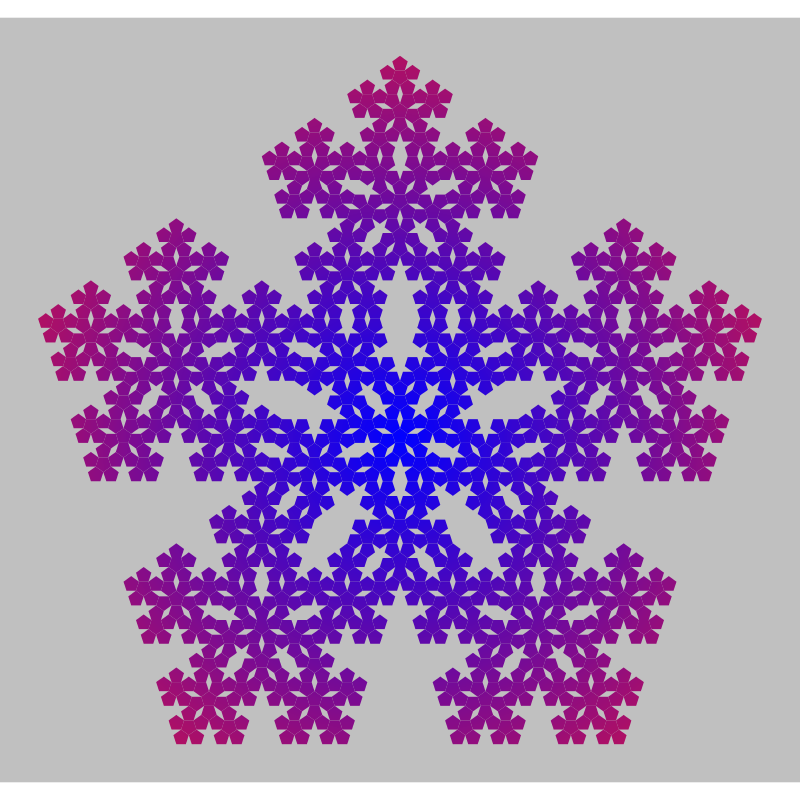Fractal construction with pentagons.

> import Diagrams.Backend.SVG.CmdLine> {-# LANGUAGE NoMonomorphismRestriction #-}
> import Diagrams.PreludeA \(0\)-pentaflake is just a regular pentagon:
> grad = defaultRG & _RG . rGradStops .~ mkStops [(blue,0,1), (crimson,1,1)]
> & _RG . rGradRadius1 .~ 50> pentaflake' 0 = regPoly 5 1 # lw noneAn \(n\)-pentaflake is an \((n-1)\)-pentaflake surrounded by five more. The appends function is useful here for positioning the five pentaflakes around the central one.
> pentaflake' n = appends
> pCenter
> (zip vs (repeat (rotateBy (1/2) pOutside)))
> where vs = iterateN 5 (rotateBy (1/5))
> . (if odd n then negated else id)
> $ unitY
> pCenter = pentaflake' (n-1)
> pOutside = pCenter # opacity (1.7 / fromIntegral n)
>
> pentaflake n = pentaflake' n # fillTexture grad # bgFrame 4 silverA \(4\)-pentaflake looks nice. Of course there’s an exponential blowup in the number of primitives, so generating higher-order pentaflakes can take a long time!
> example = pentaflake 4> main = mainWith (example :: Diagram B)